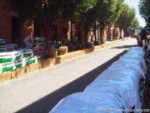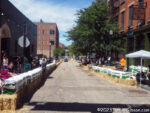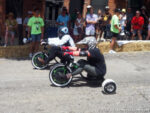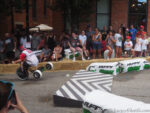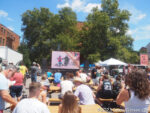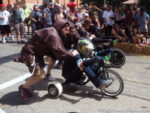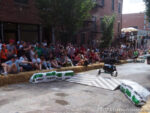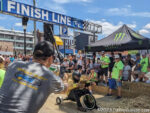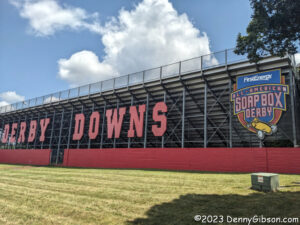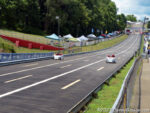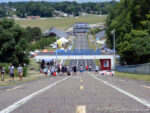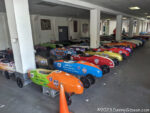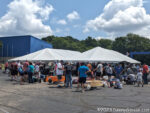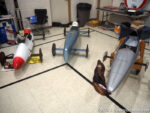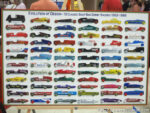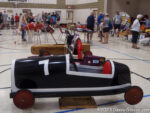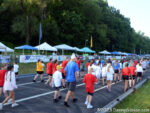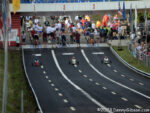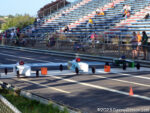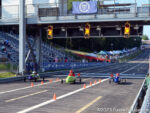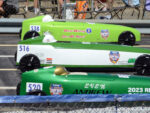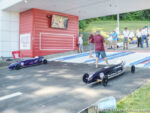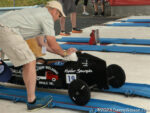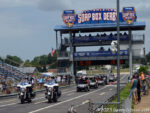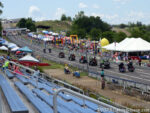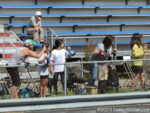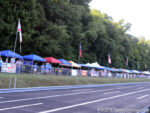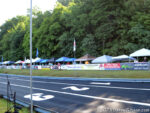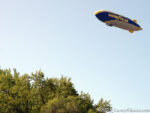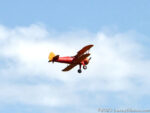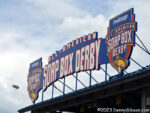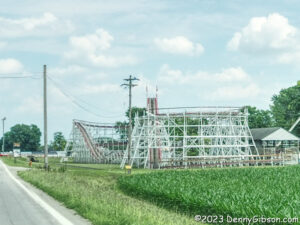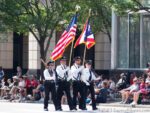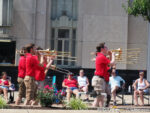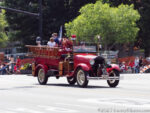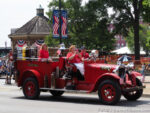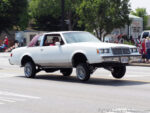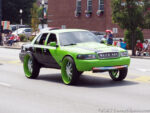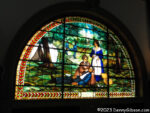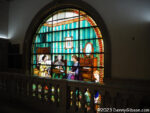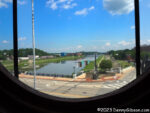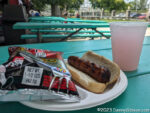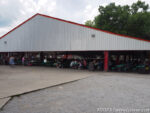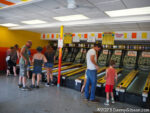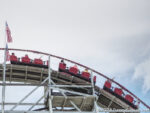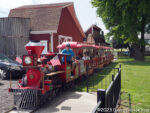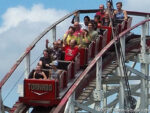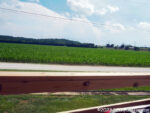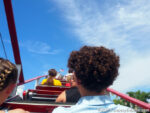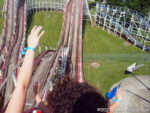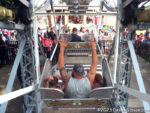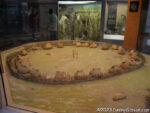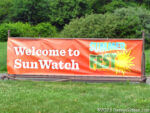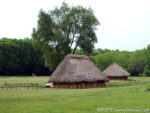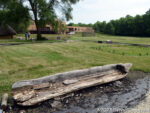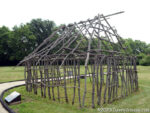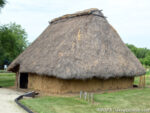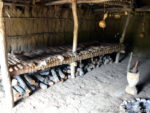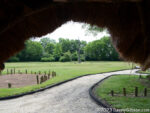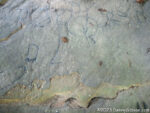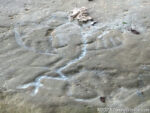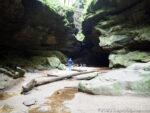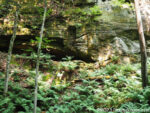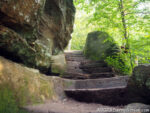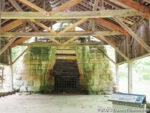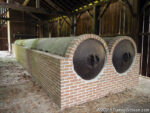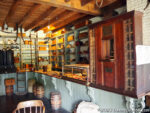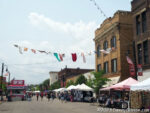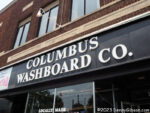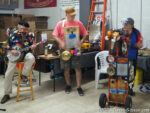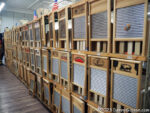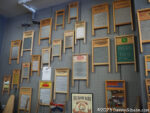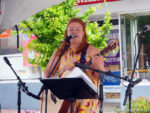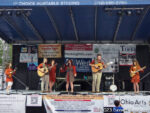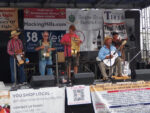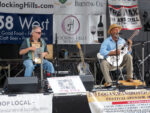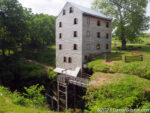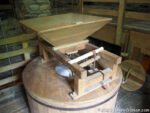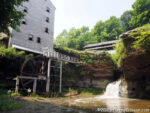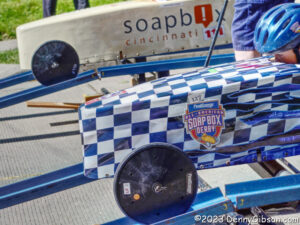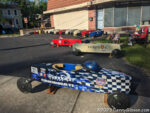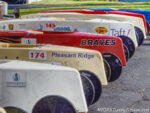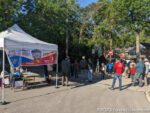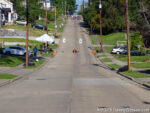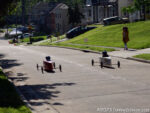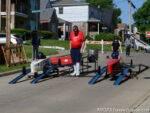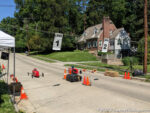 Last week’s post covered my second-ever visit to the Dayton Porchfest. My first visit was covered as the “something new” in the 2018 Two Oldies and Something New triple feature. Although the order was shuffled this year, those three events again occurred within a week of each other, and I again attended all three. So this post will complete the coverage by reporting on the two oldies of 2018. First up is the Great Darke County Fair where I found some of the critters a little eggcentric. “That’s a joke, I say, that’s a joke, son.”
Last week’s post covered my second-ever visit to the Dayton Porchfest. My first visit was covered as the “something new” in the 2018 Two Oldies and Something New triple feature. Although the order was shuffled this year, those three events again occurred within a week of each other, and I again attended all three. So this post will complete the coverage by reporting on the two oldies of 2018. First up is the Great Darke County Fair where I found some of the critters a little eggcentric. “That’s a joke, I say, that’s a joke, son.”

 Before I saw any of the critters or any of the other agricultural exhibits, I strolled down the midway past rides and games that were almost — but not quite — the same as those I strolled past as a teenager many years ago.
Before I saw any of the critters or any of the other agricultural exhibits, I strolled down the midway past rides and games that were almost — but not quite — the same as those I strolled past as a teenager many years ago.
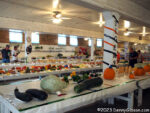

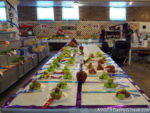 In the lower floor of the coliseum, almost all of the flowers that had peaked for the judging were gone along with most of the baked goods. Thankfully, quite a few fruits and vegetables remained to supply some color.
In the lower floor of the coliseum, almost all of the flowers that had peaked for the judging were gone along with most of the baked goods. Thankfully, quite a few fruits and vegetables remained to supply some color.
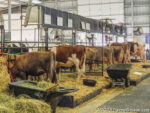
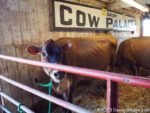 I was encouraged by the realization that I was still capable of recognizing dairy cows and also comforted by the fact that they were prominently labeled in case I falter at some point in the future.
I was encouraged by the realization that I was still capable of recognizing dairy cows and also comforted by the fact that they were prominently labeled in case I falter at some point in the future.
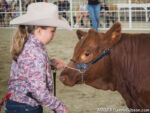
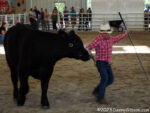
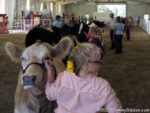 I peeked in on the only judging that I saw going on while I was there. Junior events such as this are really the only fair competitions that I enjoy anymore. I guess it’s because I don’t need to know a single kid or critter to appreciate the accomplishments.
I peeked in on the only judging that I saw going on while I was there. Junior events such as this are really the only fair competitions that I enjoy anymore. I guess it’s because I don’t need to know a single kid or critter to appreciate the accomplishments.
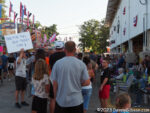 The day’s big event was the tractor pull. I had seen signs promoting it as I entered the grounds and glimpsed some of the competing machines when I passed the race track. My memories go back to when horses and tractors both competed in — separate — pulling events at the fair. I hesitated only a moment at the tail end of the ticket line before heading to my car and starting the long drive home.
The day’s big event was the tractor pull. I had seen signs promoting it as I entered the grounds and glimpsed some of the competing machines when I passed the race track. My memories go back to when horses and tractors both competed in — separate — pulling events at the fair. I hesitated only a moment at the tail end of the ticket line before heading to my car and starting the long drive home.
 The second oldie was the Tri-State Gas Engine and Tractor Show where my Wheel Horse collecting buddy, Terry, is a regular exhibitor. When hooked to a tractor, that trailer in the foreground of the picture becomes my chariot as Terry chauffeurs me around the grounds looking for items of interest.
The second oldie was the Tri-State Gas Engine and Tractor Show where my Wheel Horse collecting buddy, Terry, is a regular exhibitor. When hooked to a tractor, that trailer in the foreground of the picture becomes my chariot as Terry chauffeurs me around the grounds looking for items of interest.
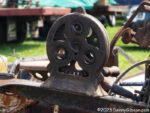 There is no shortage of strange contraptions at the show. Many of them we have seen before or at least know what they are but not all. This was a mystery that intrigued us enough to pause and make some guesses but not enough to actually dismount and examine it. I commented that it resembled a small corn sheller although there were clear differences. I snapped a picture and the mystery was instantly solved once I saw it enlarged. New Era Rope Machine is cast into its surface and there is a video of it being used here.
There is no shortage of strange contraptions at the show. Many of them we have seen before or at least know what they are but not all. This was a mystery that intrigued us enough to pause and make some guesses but not enough to actually dismount and examine it. I commented that it resembled a small corn sheller although there were clear differences. I snapped a picture and the mystery was instantly solved once I saw it enlarged. New Era Rope Machine is cast into its surface and there is a video of it being used here.
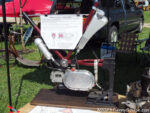
 There was no mystery in the purpose of either of these contraptions but there were some details that were far from obvious. Terry had previously seen the display and met the owner, and made me aware of just how odd this little engine was. The story of the variable displacement diesel that burned a variety of fuels including paraffin is here. A description of its operation is here. The Shaw product was another kit engine designed to be mounted on a bicycle. This example is mounted on a Gendron Iron Wheel Company bicycle. Shaw eventually switched to Briggs & Stratton engines but remained in business selling mowers and small tractors until 1962. Although it has gone through many changes, Gendron Inc. still exists as a manufacturer of mobile patient management systems.
There was no mystery in the purpose of either of these contraptions but there were some details that were far from obvious. Terry had previously seen the display and met the owner, and made me aware of just how odd this little engine was. The story of the variable displacement diesel that burned a variety of fuels including paraffin is here. A description of its operation is here. The Shaw product was another kit engine designed to be mounted on a bicycle. This example is mounted on a Gendron Iron Wheel Company bicycle. Shaw eventually switched to Briggs & Stratton engines but remained in business selling mowers and small tractors until 1962. Although it has gone through many changes, Gendron Inc. still exists as a manufacturer of mobile patient management systems.
Dale, another school days buddy of mine lives nearby and the show is a convenient meeting spot for the three of us. Along with Dale’s wife, we spent a fair amount of time this year solving the world’s problems and ignoring our own. At the end of the day, as soon as I started walking to my car, I realized with regret that I should have asked someone to snap a picture of our little group. I’ll try not to forget next time.

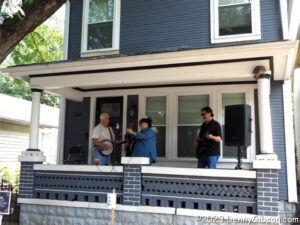
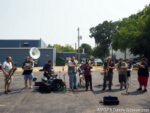
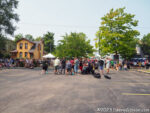
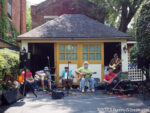
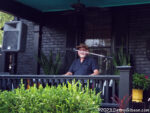
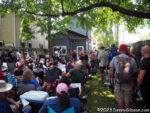



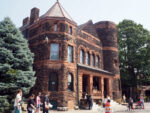
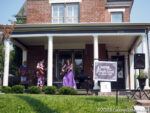
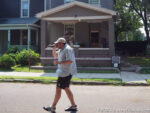
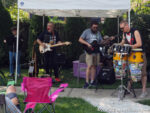
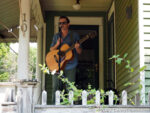

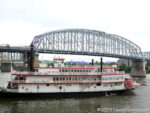
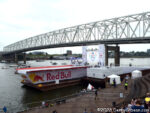










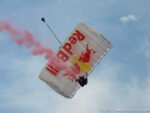
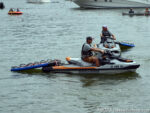


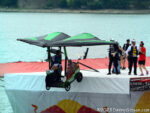

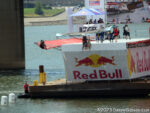
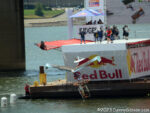

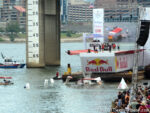

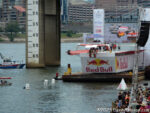
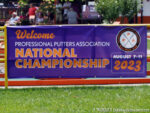
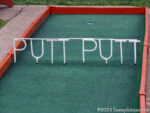
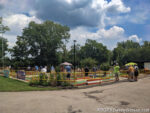

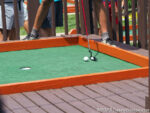

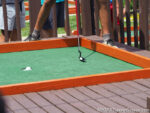
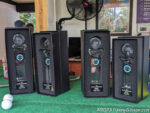

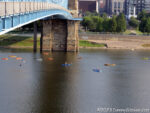

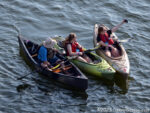
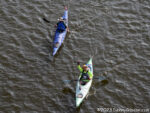
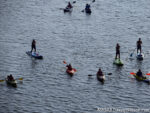
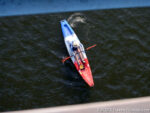
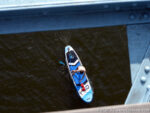



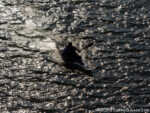
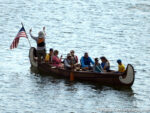
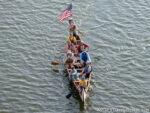
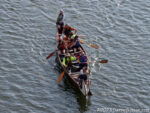
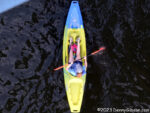
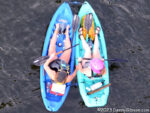


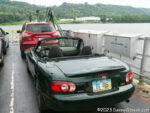

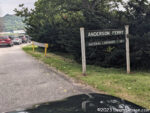

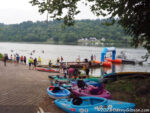
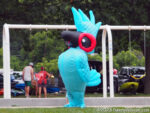

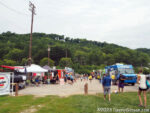
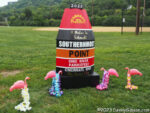
 History does repeat itself. In the early 1970s, I lived with my wife and two sons in a house with a driveway that sloped to a paved area in the back. That driveway was an ideal spot for the four-year-old to give his Big Wheel a workout. While I worked on something on a car behind the house, he repeatedly pushed the three-wheeler to the top of the hill so he could come rocketing down the hill, brace his feet on the pedals to stop the big front wheel, and throw the rear wheels into a perfect 180-degree slide. This was exactly what Big Wheels were designed for. After one of his countless slides, he looked up at me and made an incredibly insightful observation. “Dad”, he said, “I bet you wish you could do this.”
History does repeat itself. In the early 1970s, I lived with my wife and two sons in a house with a driveway that sloped to a paved area in the back. That driveway was an ideal spot for the four-year-old to give his Big Wheel a workout. While I worked on something on a car behind the house, he repeatedly pushed the three-wheeler to the top of the hill so he could come rocketing down the hill, brace his feet on the pedals to stop the big front wheel, and throw the rear wheels into a perfect 180-degree slide. This was exactly what Big Wheels were designed for. After one of his countless slides, he looked up at me and made an incredibly insightful observation. “Dad”, he said, “I bet you wish you could do this.”